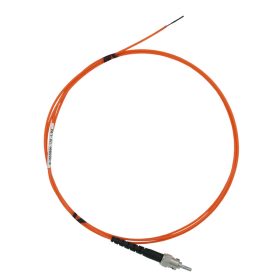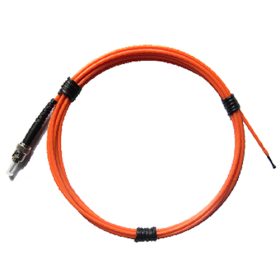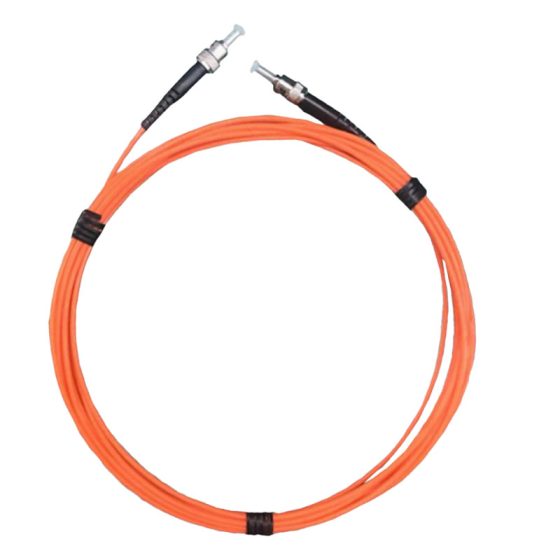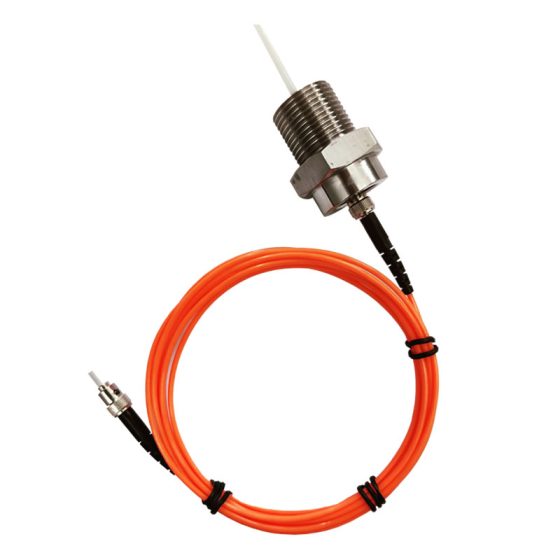The length, tonu, temperature measurement range, fiber diameter, and sheath material of fiber optic temperature sensors can be customized according to your needs. Please contact us for consultation!
Fluorescent fiber optic temperature sensing probes have many advantages that other temperature sensing probes cannot compare to, such as good electrical insulation, resistance to electromagnetic interference, chemical corrosion, and no pollution. This makes fluorescent sensing probes not only used in many fields such as biology and medicine, but also have broad application prospects in the power industry. They are mainly used for temperature measurement of high-voltage instruments in electrical equipment, temperature measurement between generator diagnostic systems and transformer windings, temperature measurement of high-voltage circuit breaker contacts, and temperature measurement of high-voltage cable joints.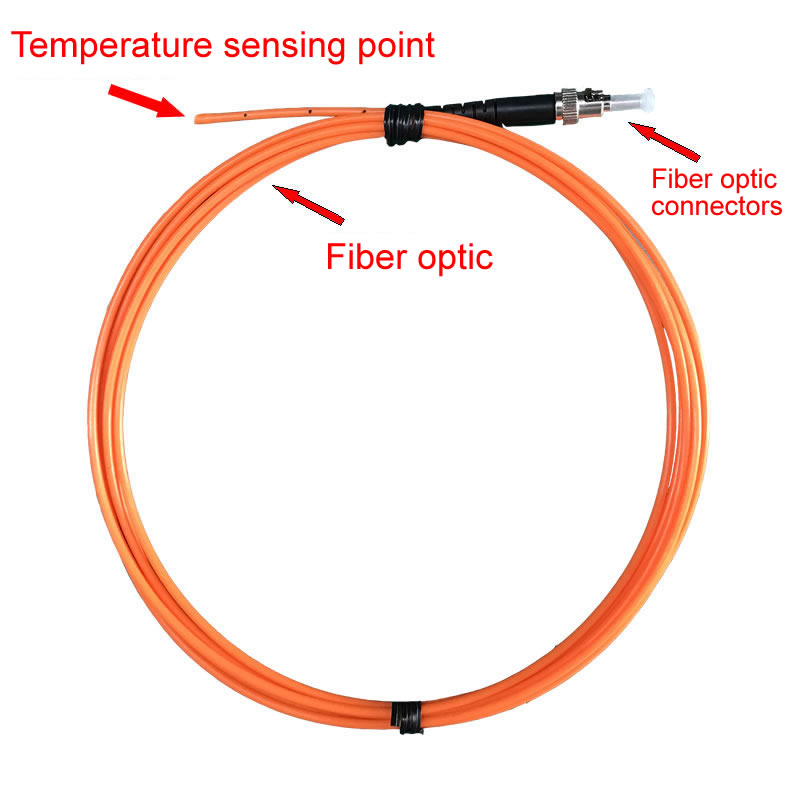
Introduction to Fluorescent Fiber Optic Sensing Probes
The fiber optic probe consists of three parts: ST connector, fiber optic cable, and end temperature sensing end. The ST connector is the connection part with the photoelectric module; Fiber optic cable is the transmission part, with quartz fiber inside. The quartz fiber has a coating and cladding on the outside, and a Teflon protective sleeve on the outermost part; The end temperature sensing end contains temperature sensing rare earth materials, which are used to generate optical signals containing temperature information; The optical fiber is resistant to high temperatures of 200 ℃ and has an outer diameter of 3mm. Long term bending radius of 13.2cm. Short term bending radius of 4.4cm. When the distance between the fiber optic lead and the ground is 0.4m, it can withstand a power frequency voltage of 100KV for a duration of 5 minutes.

The Temperature Measurement Principle of Fluorescent Filo Optic e ʻea sensor resistance
A fluorescent fiber optic temperature sensor is composed of a multimode fiber optic and a fluorescent object (membrane) installed at its top. Fluorescent substances emit fluorescence energy when stimulated by light of a certain wavelength (stimulated spectrum). After the incentive is revoked, the persistence of fluorescence afterglow depends on factors such as the characteristics of the fluorescent substance and environmental temperature. This excited fluorescence usually decays exponentially, and the decay time constant is called fluorescence lifetime or fluorescence afterglow time. The attenuation of fluorescence afterglow varies at different ambient temperatures. Ko ia, by measuring the lifespan of fluorescence afterglow, the ambient temperature at that time can be determined.

 ʻIkai ha kalava optic e mafana ʻo e ʻea ,founga vakaiʻi ʻo e māfana ʻo e ʻeá.
ʻIkai ha kalava optic e mafana ʻo e ʻea ,founga vakaiʻi ʻo e māfana ʻo e ʻeá.


